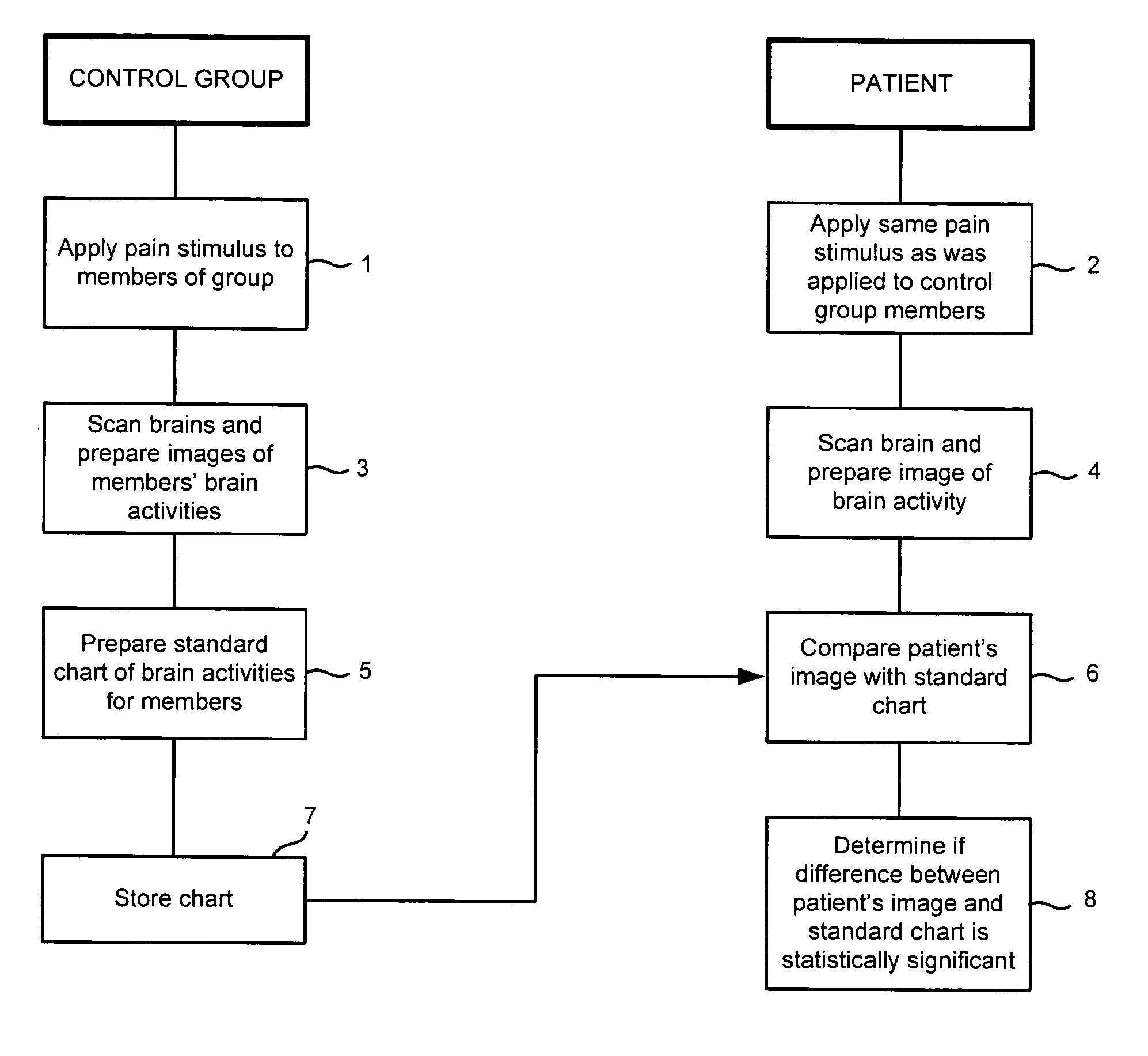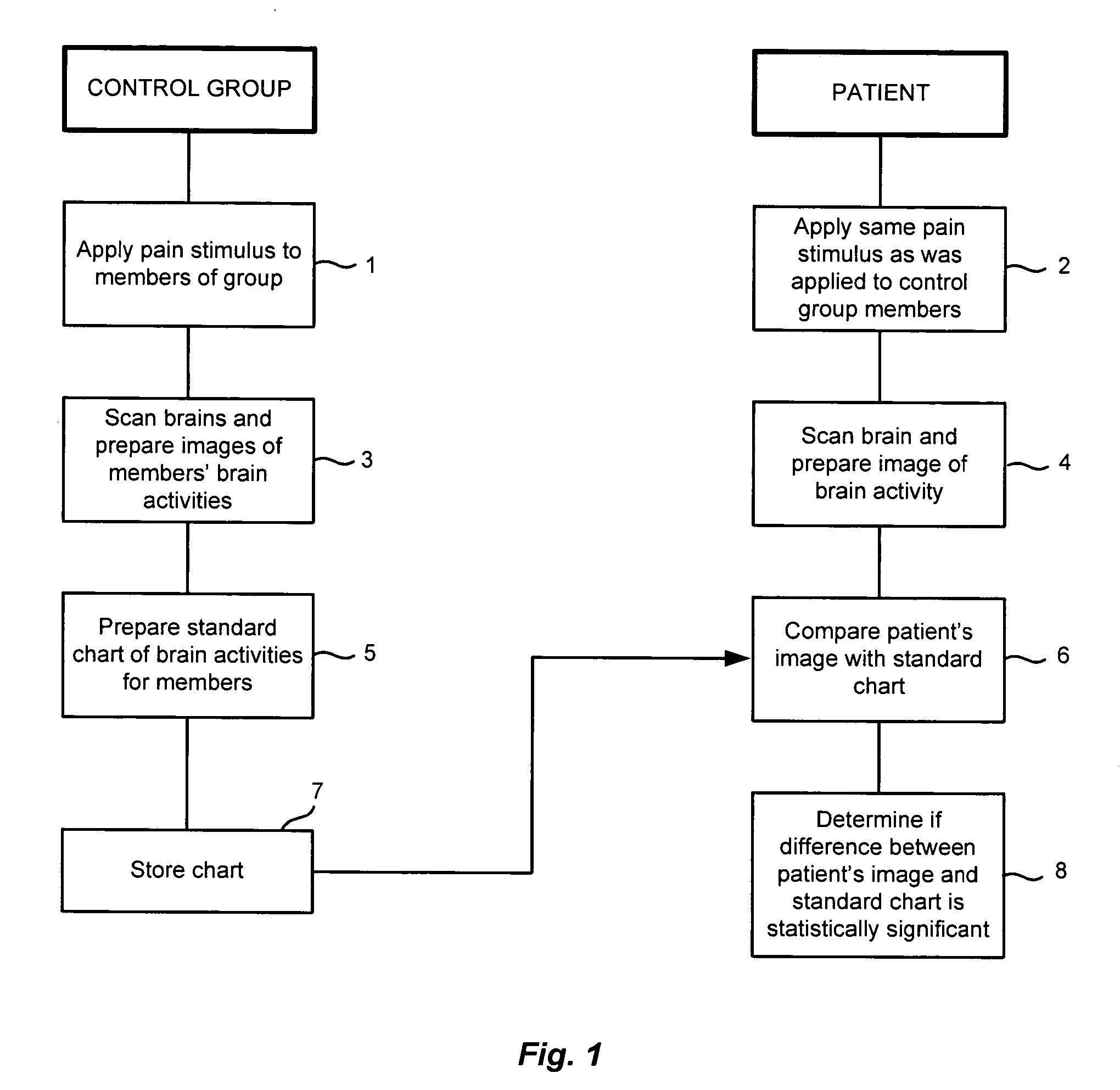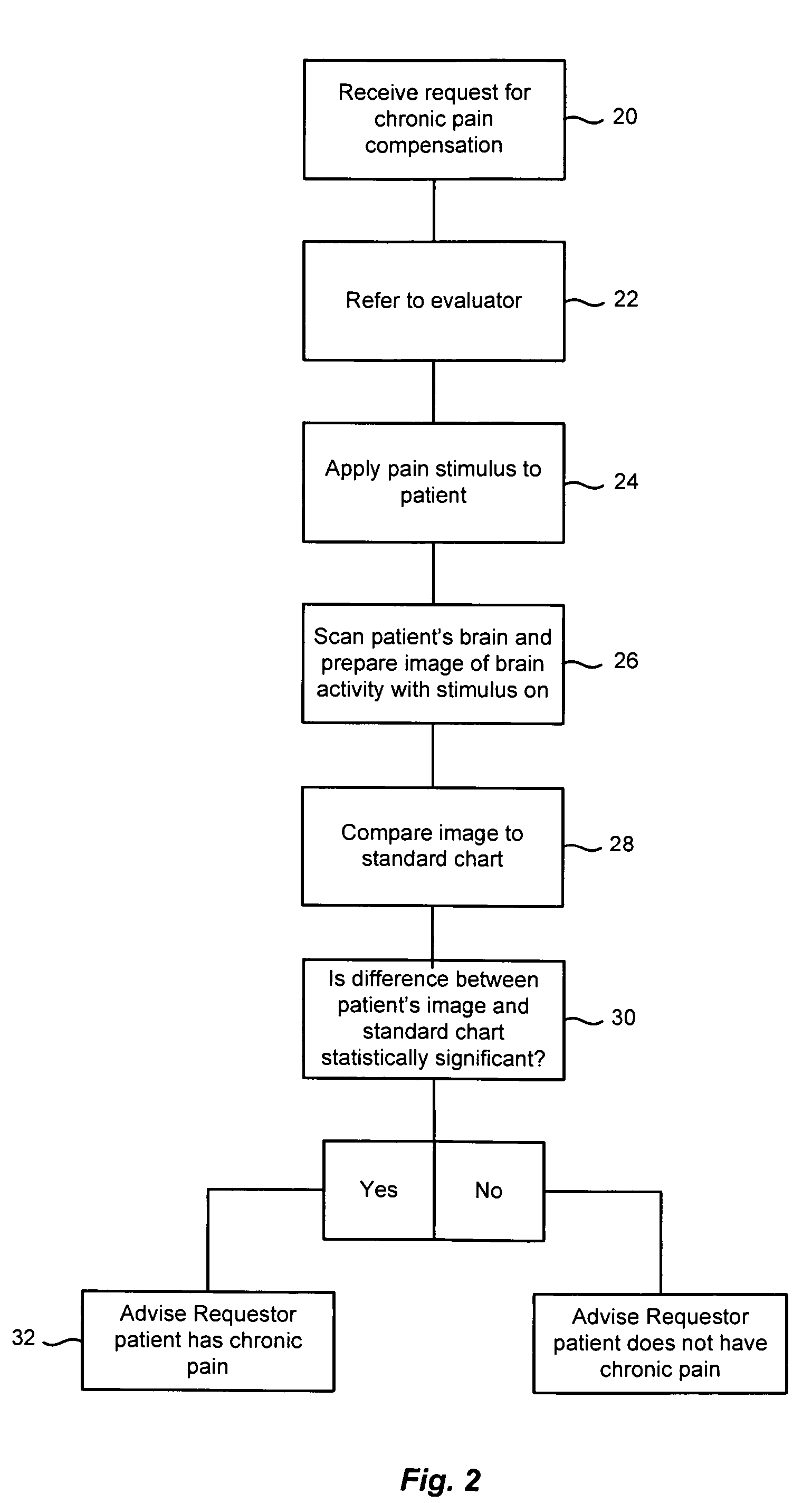Objective determination of chronic pain in patients
a technology for chronic pain and patients, applied in the field of objective determination of chronic pain in individuals, can solve the problem that patients cannot consciously influence the process
- Summary
- Abstract
- Description
- Claims
- Application Information
AI Technical Summary
Benefits of technology
Problems solved by technology
Method used
Image
Examples
Embodiment Construction
[0045]Pain that stops activity amounts to a disability. Pain is a subjective, unpleasant sensation that varies, depending on a variety of factors, such as genetics, brain chemistry, past pain experience, culture, emotion, suggestions, etc. Pain can be secondary to actual, potential tissue damage and also secondary to brain abnormal / pathological nociception information processing.
[0046]Clinicians, insurance companies and the courts have relied on physical examination and a variety of examination techniques to identify and quantify pain. For example, in the evaluation of chronic pain patients, routine MRI scans, CT scans, electromyelograms, etc. have been employed as providing at least a measure of non-subjective findings, but they are not objective. A routine MRI may show pathology that is or is not a pain generator. The levels of the pain and / or disability stated by a patient are subjective complaints that are highly variable and not objectively reliable. However, on an f-MRI, pain ...
PUM
 Login to View More
Login to View More Abstract
Description
Claims
Application Information
 Login to View More
Login to View More - R&D
- Intellectual Property
- Life Sciences
- Materials
- Tech Scout
- Unparalleled Data Quality
- Higher Quality Content
- 60% Fewer Hallucinations
Browse by: Latest US Patents, China's latest patents, Technical Efficacy Thesaurus, Application Domain, Technology Topic, Popular Technical Reports.
© 2025 PatSnap. All rights reserved.Legal|Privacy policy|Modern Slavery Act Transparency Statement|Sitemap|About US| Contact US: help@patsnap.com



